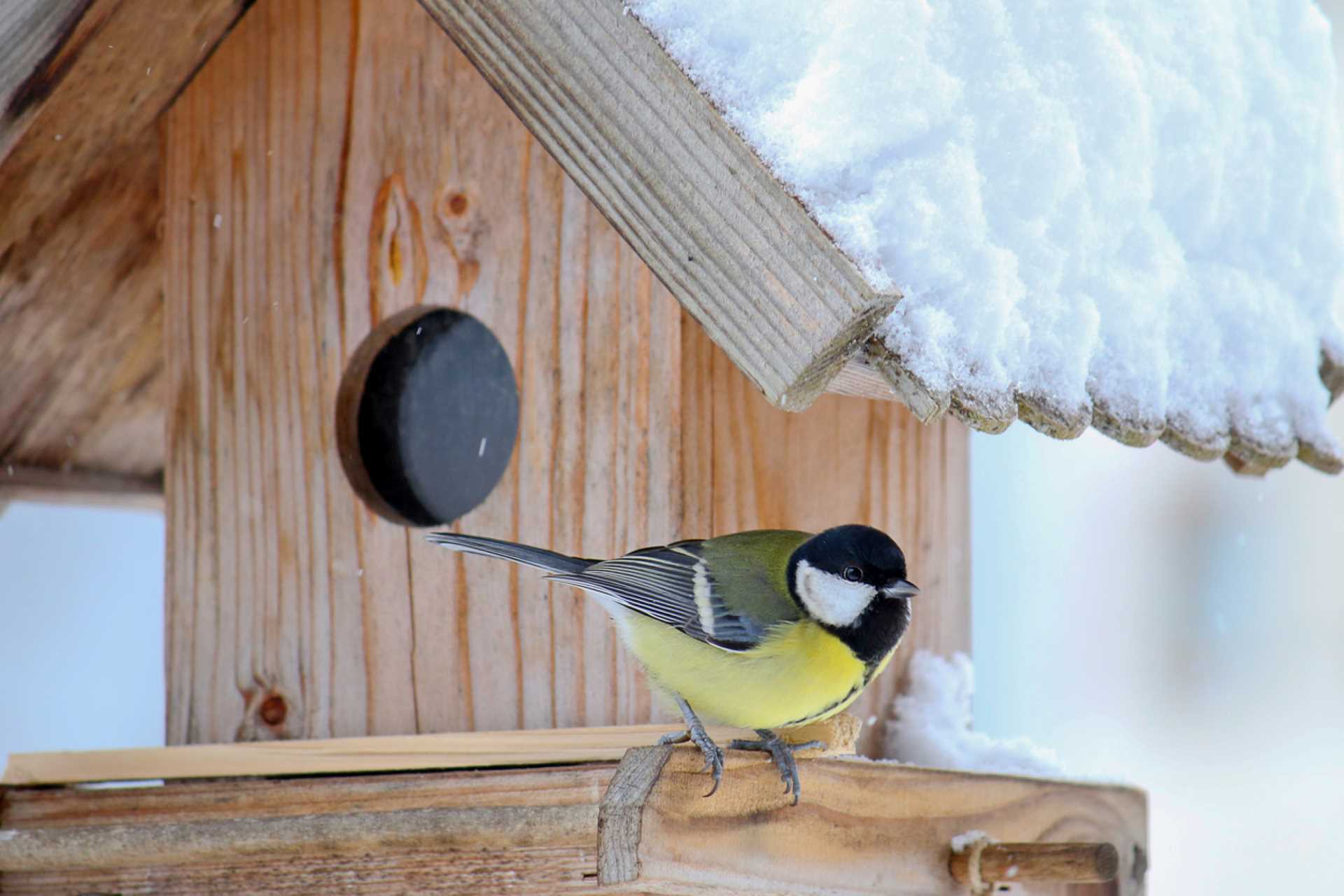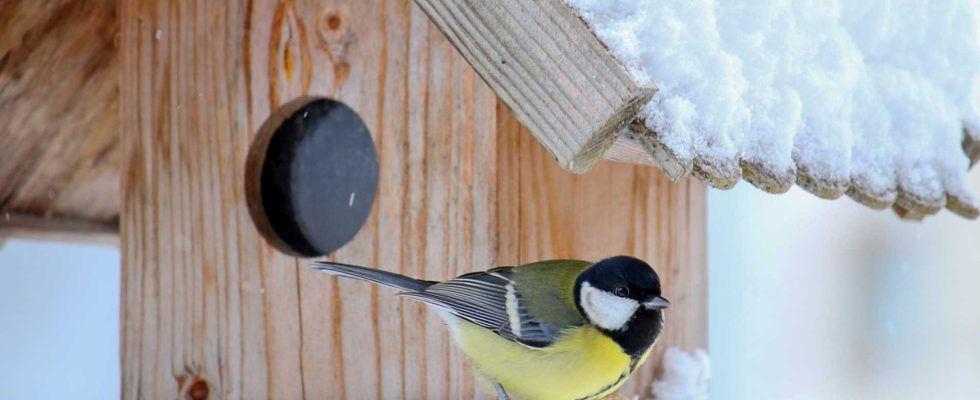
Why feed birds in winter?
Winter is a difficult time for birds who may face cold and hunger.
- Cold : You should know that when it comes to fighting the cold, birds inflate their feathers to use the heated layer of air between their body and their plumage as insulation, but this requires some effort. energy: in one night, they can lose up to 12% of their weight to cope with nighttime temperature drops. The other element that protects them from the cold is the layer of fat under their skin, but they still need to have some left.
- Hunger : it is the greatest threat facing birds in winter. It is indeed much more difficult for them to find food, because the ground is frozen or covered with snow, insects are rarer, the days are shorter and give them less time to find food, etc. This difficulty in finding something to eat is compounded by the fact that, as we have seen, it consumes a large part of their energy fighting against the cold and draws on their reserves.
When to feed the birds?
The best option is to start feed the birds from the first frost, because it is during this period that their calorie needs are highest. This generally corresponds to the period which extends from mid-November until the end of March.
Birds will appreciate this easily accessible food. You can therefore put food in early in the morning, which will allow them to replenish their calorie reserve, after having spent the night burning it, but also at the end of the day to allow them to stock up on calories before facing the night cold.
How to feed birds in winter?
To feed birds, you can use feeders that protect the food from humidity and frost.
Here are a few tips :
- Place the feeders, preferably, high up and, if you install them in your garden, near bushes, shrubs or trees. Thus, in the event of danger, such as the arrival of a cat or a hawk, the birds will be able to take refuge there.
- Install feeders away from windows to avoid any accident.
- Install multiple feeders in order to avoid too many gatherings on the same feeder, which is a source of disease transmission.
- Don’t throw food on the groundat the risk of attracting unwanted animals such as rodents or pigeons.
- If you buy fat balls in fillets, be sure to remove them from the fillets first, because they can trap birds who risk dying from exhaustion trying to free themselves. A simple tip for presenting these balls to birds without putting them at risk is to put the balls in a kitchen whisk, then hang the whole thing outside.
What food to give to birds?
You must offer to the birds foods rich in lipids which will allow them to stock up on energy. These foods will be appreciated by a large number of birds. Here are what can be considered high-fat foods:
- Fat, whether margarine or any other vegetable fat. You can even make your own balls by incorporating a mixture of seeds.
- It is possible to offer seeds sunflower, cracked wheat, cracked corn, millet, oats, etc.
- You can also provide dried fruit, like hazelnuts, walnuts, almonds. It will be necessary to provide them peeled or even crushed.
- Unsalted and unroasted peanuts, peeled or in shell will also be appreciated.
- You can also make available apples and pears.
- You can also bet on oatmeal, neither sweet nor salty.
This list is not exhaustive.
What food should you never give?
By feeding unsuitable foods to birds, you may do them more harm than good, as their digestive system could suffer. Here are the foods not to give to birds:
- Dry bread or rusks: they swell in these animals’ small stomachs and can lead to bone problems.
- Leftover pastries: for the same reasons.
- Desiccated coconut: it has the same effects as bread and pastries.
- Milk : birds do not digest it and it can cause fatal digestive disorders.
- Fly larvae: These are very resistant parasites which can cause perforation of the stomach of birds.
- Salty foods : salt is very toxic to birds. It can cause kidney dysfunction and be fatal.
- Butter, lard, tallow, pieces of fat: all animal fats should be avoided. It is much better to give them vegetable fats.
- Flax or castor seeds: they are toxic to birds.
Think about water
Giving the birds food is good, but you also have to think about giving them something to drink, because the water can be frozen when the temperatures are too low and the snow is not of much use to them. To supply them with water, you can use a shallow container into which you will regularly pour hot water.
Good practices to follow
Beyond giving healthy food to birds, it is also important to do so while respecting a few rules:
- To prevent birds from losing their autonomy and their instinct to search for food, it is advisable to only feed them during the winter period, not the rest of the year.
- To avoid the danger of predators, Place the seeds in sheltered, elevated feeders.
- To protect birds from infectious diseases, take the trouble to disinfect feeders at the start of the season, then clean them regularly, as well as the drinkers. To do this, you can use soapy water or a natural disinfectant. For this cleaning, wear gloves.
- Keep food dry and protected.
- Alternate feeding areas and multiply them so as to avoid concentrations of birds in the same place.
- Fill feeders sparingly so that the food is consumed within 2 days.

